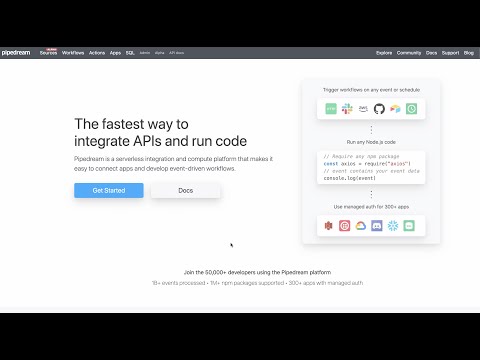What do you want to automate
with PagerDuty and Microsoft Power BI?
Prompt, edit and deploy AI agents that connect to PagerDuty, Microsoft Power BI and 3,000+ other apps in seconds.
Trusted by 1,000,000+ developers from startups to Fortune 500 companies
Popular Ways to Connect PagerDuty with Microsoft Power BI#
Popular PagerDuty and Microsoft Power BI Triggers#
Emit new event each time a new user rotates onto an on-call rotation
Emit new event each time an incident is created or updated
Emits a new event when a dataset refresh operation has completed. See the documentation
Emits an event when a dataset refresh operation has failed in Power BI. See the documentation
Emit new event when a new dataset refresh operation is created. See the documentation
Popular PagerDuty and Microsoft Power BI Actions#
Adds new data rows to the specified table within the specified dataset from My workspace. See the documentation
Find the user on call for a specific schedule. See the docs here
Cancels a refresh operation for a specified dataset in Power BI. See the documentation
Creates a new Push Dataset in Power BI. See the documentation
Overview of PagerDuty#
The PagerDuty API offers a powerful interface to automate your digital operations management. By leveraging its capabilities on Pipedream, you can create workflows that respond to incidents, automate alerts, and synchronize incident data across various platforms. PagerDuty's API enables you to manage services, teams, and incidents, ensuring that your systems remain operational and that the right people are notified at the right time.
Connect PagerDuty#
import { axios } from "@pipedream/platform"
export default defineComponent({
props: {
pagerduty: {
type: "app",
app: "pagerduty",
}
},
async run({steps, $}) {
return await axios($, {
url: `https://api.pagerduty.com/users/me`,
headers: {
Authorization: `Bearer ${this.pagerduty.$auth.oauth_access_token}`,
"Accept": `application/vnd.pagerduty+json;version=2`,
},
})
},
})
Overview of Microsoft Power BI#
The Microsoft Power BI API allows you to interact with your Power BI assets programmatically. With this API, you can embed your reports and dashboards into applications, manage Power BI datasets, push data into datasets for real-time dashboard updates, and automate your reporting workflows. On Pipedream, you can use this API to create intricate workflows that react to various triggers, like webhooks or schedules, and perform actions like refreshing datasets, posting to datasets, and managing Power BI assets.
Connect Microsoft Power BI#
import { axios } from "@pipedream/platform"
export default defineComponent({
props: {
microsoft_power_bi: {
type: "app",
app: "microsoft_power_bi",
}
},
async run({steps, $}) {
return await axios($, {
url: `https://api.powerbi.com/v1.0/myorg/availableFeatures`,
headers: {
Authorization: `Bearer ${this.microsoft_power_bi.$auth.oauth_access_token}`,
},
})
},
})
Related Videos#
